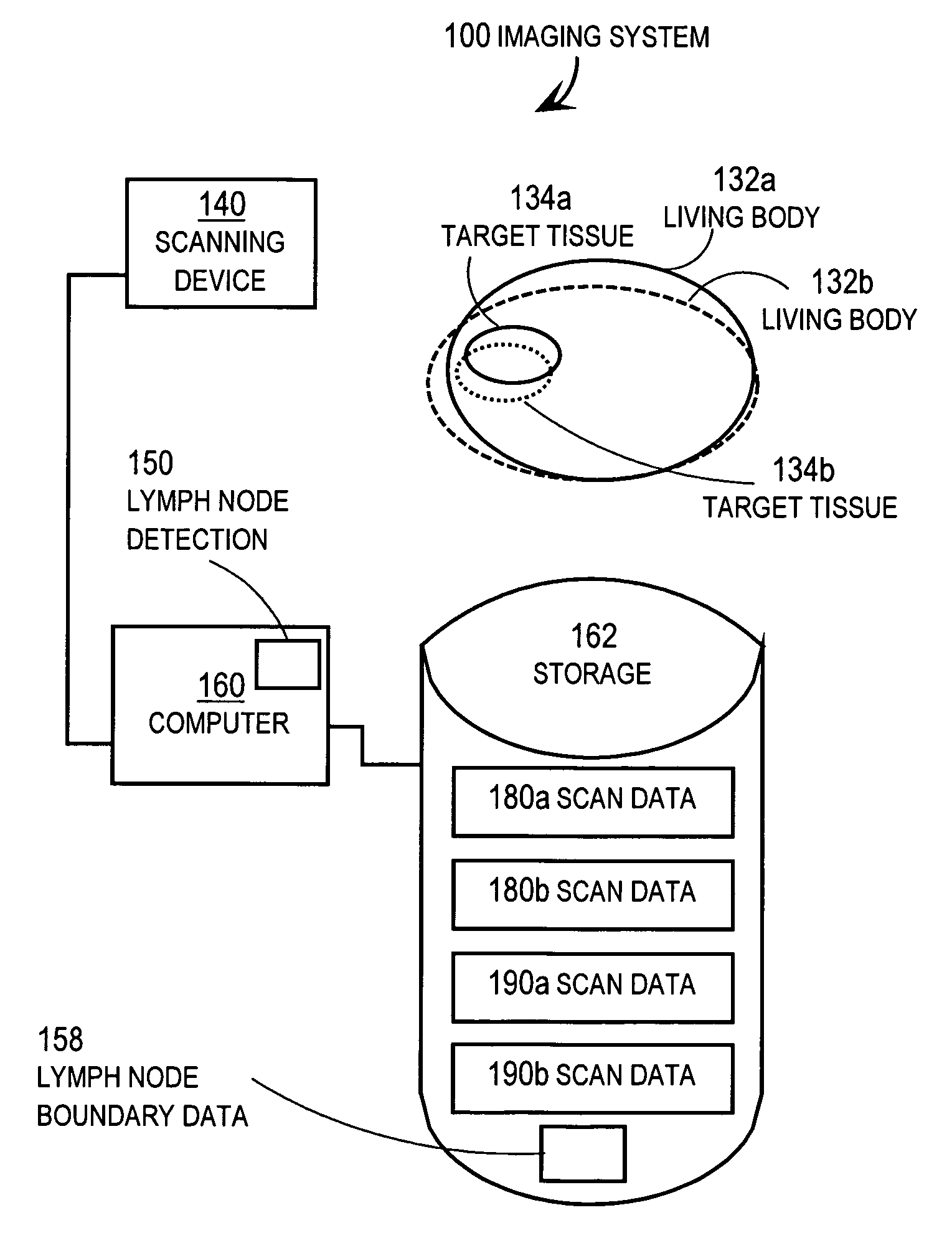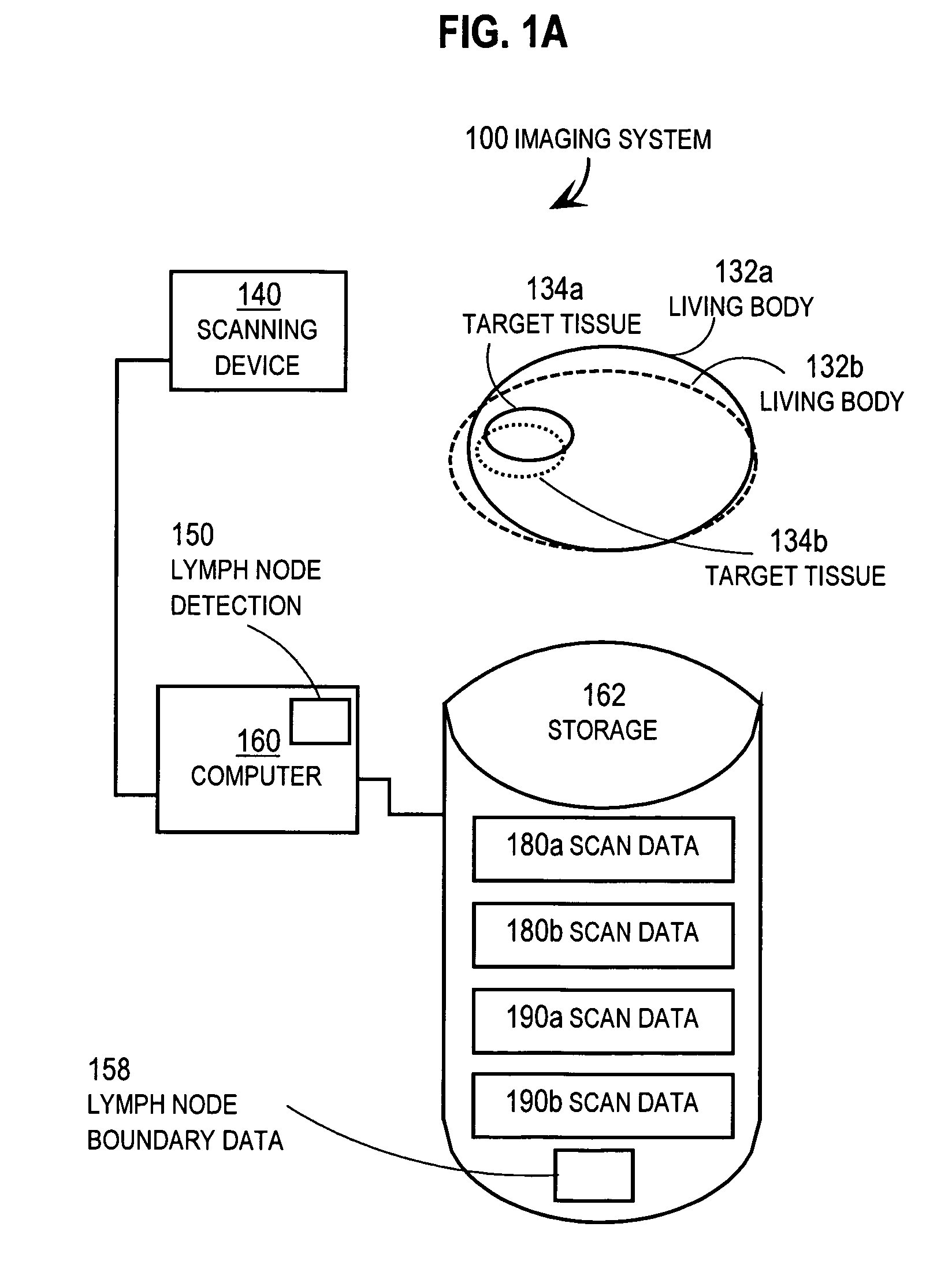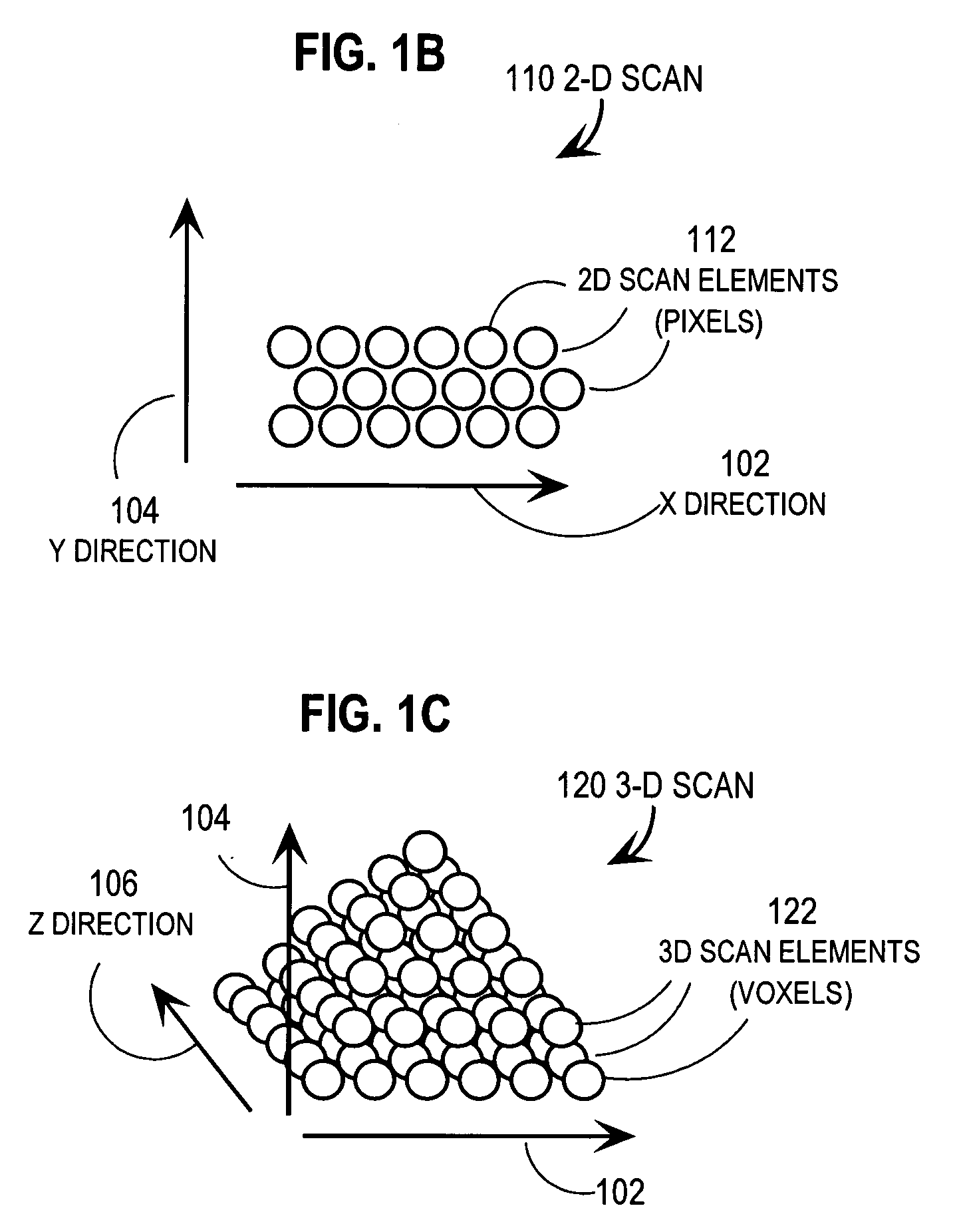Automated Determination of Lymph Nodes in Scanned Images
a lymph node and scanned image technology, applied in the field of automatic determination of lymph nodes in noninvasive scanned images of the body, can solve the problems of inappropriate treatment of cancer patients, difficult and tedious detection of lymph nodes, and the inability to identify a structure as a lymph node which is not cancerous, and achieve the effect of avoiding cancer and avoiding cancerous patients
- Summary
- Abstract
- Description
- Claims
- Application Information
AI Technical Summary
Benefits of technology
Problems solved by technology
Method used
Image
Examples
Embodiment Construction
[0051]A method and apparatus are described for automatically detecting or segmenting lymph nodes, or both, in non-invasive scanned images of a body. In the following description, for the purposes of explanation, numerous specific details are set forth in order to provide a thorough understanding of the present disclosure. It will be apparent, however, to one skilled in the art that an embodiment may be practiced without these specific details. In other instances, well-known structures and devices are shown in block diagram form in order to avoid unnecessarily obscuring the present disclosure.
[0052]Some embodiments are described in the context of lymph nodes in CT scanned images of a human body. However, the invention is not limited to this context. In other embodiments lymph nodes or spatially related anatomical objects, such as the aorta, liver and inferior vena cava, are detected or segmented in scans of human or animal bodies using any scanning device, such as CT scanners, MRI sc...
PUM
 Login to View More
Login to View More Abstract
Description
Claims
Application Information
 Login to View More
Login to View More - R&D
- Intellectual Property
- Life Sciences
- Materials
- Tech Scout
- Unparalleled Data Quality
- Higher Quality Content
- 60% Fewer Hallucinations
Browse by: Latest US Patents, China's latest patents, Technical Efficacy Thesaurus, Application Domain, Technology Topic, Popular Technical Reports.
© 2025 PatSnap. All rights reserved.Legal|Privacy policy|Modern Slavery Act Transparency Statement|Sitemap|About US| Contact US: help@patsnap.com



